They Harley-Davidson LiveWire is the most expensive commercially available electric motorcycle on the market. It raised a lot of buzz from the media, mostly because it’s just so… different for Harley-Davidson — a company known for low-tech (but beautiful, and nice to ride) cruisers — to create a sporty standard with an electric motor. What in the world?
I was lucky enough to be able to ride a Harley-Davidson LiveWire for a couple of days. I’ve ridden a ton of bikes in over 15 years of riding, and am generally a fan of tech (I enjoy electric mountain bikes, too), and so thought my perspective may be worth sharing.
I wanted to give a review from the perspective of an “ordinary day of riding”: cruising on a freeway, of course taking it for a blast in the mountains on the weekend, winding down slow roads, and getting stuck in traffic on the way.
This isn’t about the Harley-Davidson LiveWire on a track, going across a continent, or doing all kinds of things you might not normally do.
And this is what I think of the Harley-Davidson LiveWire — riding it everyday, the way we normally ride motorbikes.
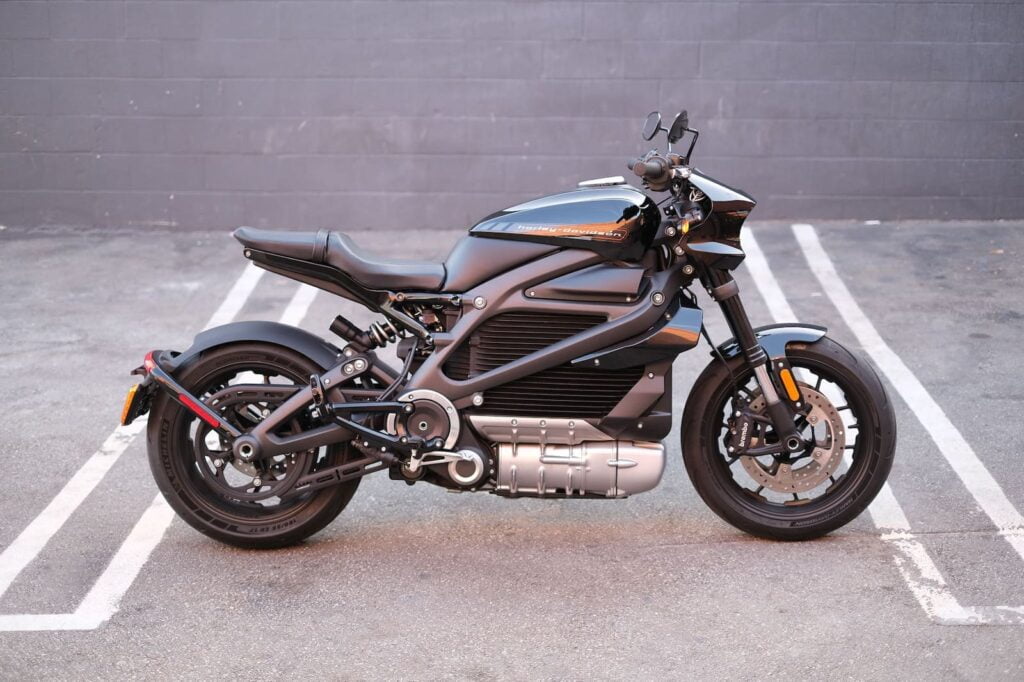
Are you obsessed with motorcycles?
Well, I am. That’s why I created this site — as an outlet. I love learning and sharing what others might find useful. If you like what you read here, and you’re a fraction as obsessed as I am, you might like to know when I’ve published more. (Check the latest for an idea of what you’ll see.)
Background — About me as a rider
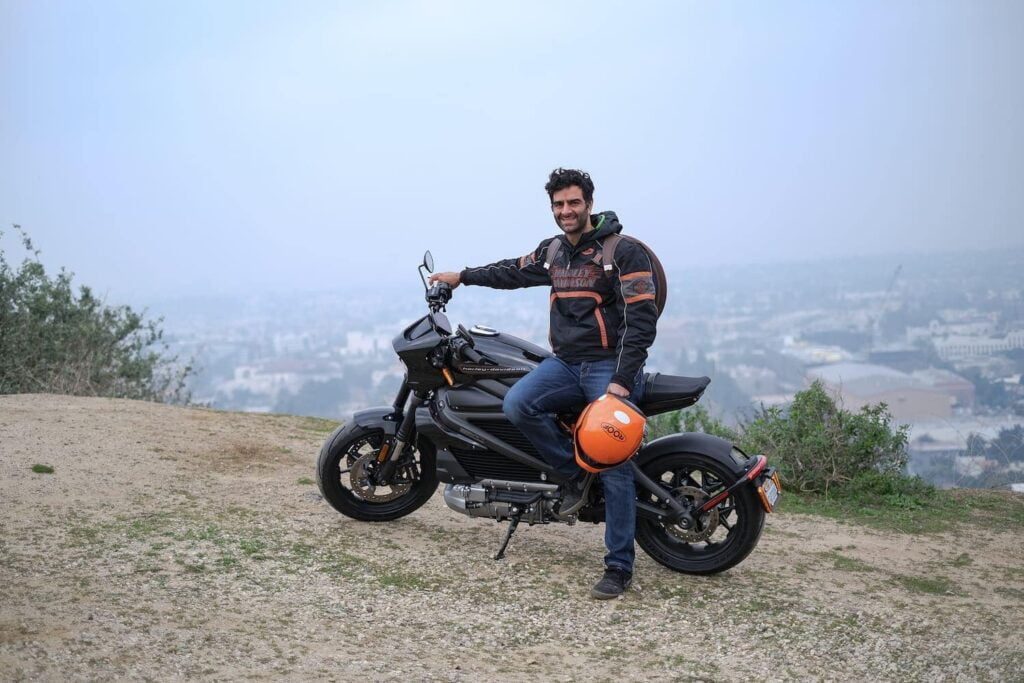
A lot of reviewers or fans of electric motorcycles are somewhat different to me. They might be young, wealthy, and/or tech-forward. Electric bikes might be their first bikes.
I’m tech-friendly (hey, I have websites!), but I’m not a Silicon Valley-based developer who thinks code is a metaphor for life.
I’ve ridden motorcycles since my early 20s when I thought I should pick up riding as a life skill that will serve me in many crazier parts of the world. Having now ridden (small) motorcycles in Asia, Africa, and Latin America, I am very glad I did learn it when I could!
Since then I’ve ridden dozens of motorcycles, many of which I’ve owned, and a few of which I’ve rented and put a few hundred miles on. I haven’t fall in love with them all, although anything with two wheels and a motor is vastly superior to nothing at all.
I don’t ride at high speeds for no reason… though I do sometimes. I wear gear. I don’t get my knee down on public roads or run from cops. If you’re looking for a sensationalist rider — maybe try YouTube.
But I do all the things normal riders do, and then some. I sit in traffic. I fang (that’s an Australian term… it means “go fast”) machines up quiet country and mountain roads on weekends. I do interstate trips a few times a year.
I work on my machine, doing my own servicing (everything short of a full engine tear-down), sometimes totally rebuilding them. And I don’t think there’s anything I can’t do — just sometimes there are space limitations (and budget limitations on equipment) as I don’t have a full workshop, just a lot of great tools.
OK, enough about me, that’s just so you know whether my opinion is relevant. Now about the motorcycle!
About the Harley-Davidson LiveWire… the Basics
I’m no spring chicken and I’ve ridden my fair share of motorcycles as you can see from this site. But somehow, the Harley-Davidson LiveWire was the first Harley-Davidson I’ve ever ridden!
I have nothing against Harleys. I love the look, I enjoy the sound, and I’m aware that the “culture” only applies to me if I adopt it. I have friends with Sportsters, Dynas, and one lucky one with a V-Rod. Given I usually include a Harley-Davidson in my list of most attractive motorcycles, I’ve always thought that one was in my future, when I pick a spot to live in long-term in the next couple of years.
But I never expected my first Harley-Davidson ride to be on an electric motorcycle!
Let me try to introduce the Harley-Davidson LiveWire’s characteristics as a motorcycle as briefly as possible, just so you don’t have Google “Livewire Specs” somewhere else:
- Posture: It’s an upright sporty performance motorcycle. The riding stance is a bit like a Ducati Monster. The handlebars are wide.
- Drivetrain: All electric, water-cooled, single gear (i.e. no gears). It produces 105 hp (78 kW), with torque available all the way from down low. Torque levels feel like riding a sports motorcycle in third gear without ever having to shift.
- Chassis: A 250kg solid-feeling chassis with weight down low. It feels very balanced and is easy to keep almost at a stand-still.
- Top speed: 95 mph. On the freeway, this means that at 70mph it has plenty of accelerating torque to spare. Point and shoot.
- Electronics: The whole kit — lean angle-sensitive ABS (an IMU), traction control with multiple ride modes, cruise control.
Like I mentioned in my Zero SR/F review, the things people want to know about electric motorcycles are “how far will it go”, “how fast will it go”, and “how long will it take to recharge”.
In addition to that, I’ll try to answer a few other pertinent questions, like: can an electric motorcycle have a soul?
Riding the Harley-Davidson Livewire: The Electric Motor
Obviously, the main point of the Harley-Davidson LiveWire is the electric motor.
Many out there think: what’s the power delivery like? Is it sudden? Is it smooth? Does an electric motor have any soul? (See later for that question!)
There’s this strange rumour going around the internet that electric motors have torque from “zero”. This is… well… wrong. No motor can have torque from zero. It’s not magic.
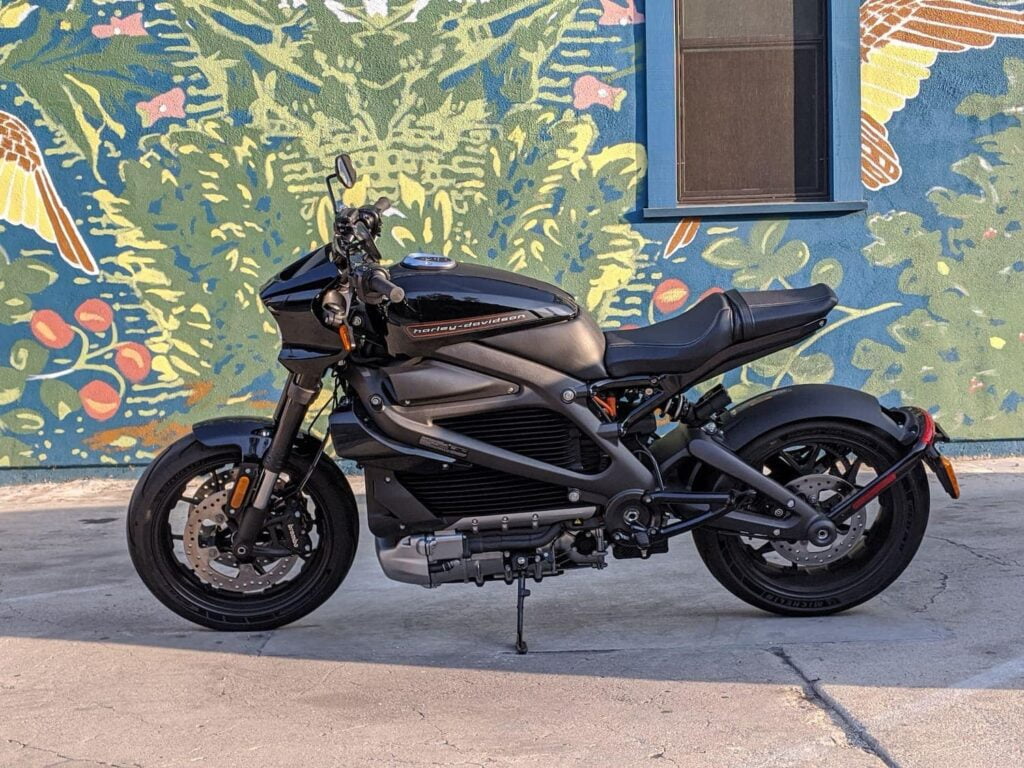
Electric motors delivery torque from basically zero, though — essentially from 50 rpm. Even so, I want you to consider a couple of things.
- If you delivered “full” electric motor torque from zero, you’d flip the bike. It’d be like sticking a giant lever under the front of the motorcycle. You’d die, hard and fast.
- If you deliver full torque as quickly as possible, you’ll use huge amounts of power and drain the battery very quickly.
For these reasons (probably especially the first one), electric motorcycles use a lot of electronic trickery to modulate the torque delivered to the motor.
Put simply, if you “wring it”, the computer goes “HOLD ON! YOU’RE GOING TO DIE IF YOU DO THAT” and instead drip-feeds the torque into the motor to ensure that the wheels stay planted on the ground.
You can change rider mode to go faster and maybe even do a wheelie (I didn’t, I didn’t want to break Diego’s motorcycle that he lent me!), but you’ll never get “full torque from zero”.
That said…
I’ve never gotten away from the traffic lights so quickly as I did on the Harley-Davidson LiveWire.
Even in eco mode (where I had it for 75% of my day’s ride so I could go for longer), all I had to do was twist the throttle and cars would be laughably far behind me.
In sports mode, the Harley-Davidson LiveWire is just frantic. Thanks to the traction control, ample torque, and not having to shift, it was easy to be a hundred metres in front of traffic when launching with them at the lights. EASY.
Part of the magic of the quick acceleration is not shifting. I never had to worry about clutching and levering — I was always in the right gear (in fact, the only gear).
And another part of the magic is how quiet the LiveWire (and any electric motorcycle) is. The quietness means you can grab the throttle and never feel even vaguely self-conscious about blowing exhaust fumes or noise into people’s open windows (I sometimes do, especially when I’ve lane-split through standing traffic to get to the front).
I wish I could somehow show you what it looked like to leave cars that far behind in the mirrors without even thinking about it, without even trying, and without even making noise. It was magic.
Likewise, the Harley-Davidson LiveWire brakes easily. While some think the brakes are soft or weak for a motorcycle of this weight, I didn’t feel this way. Part of the reason is intellectual — I know it has a Bosch IMU with lean angle-sensitive ABS, so I was confident I could push it to its limits more easily than I could find my own.
At any rate, there was no time I didn’t think it braked slowly.
Here’s something unexpected: In traffic, or taking a slow mountain pass at 20-30 mph (40-60 km/h), I found the LiveWire exceptionally easy to control.
I could balance the LiveWire almost at standstill. Not having to finesse the clutch gave me such a sense of freedom. And isn’t that what motorcycling is about: the freedom to go nowhere or to go at any speed, at the drop of a hat?
That Harley-Davidson LiveWire Sound, though (or lack thereof)
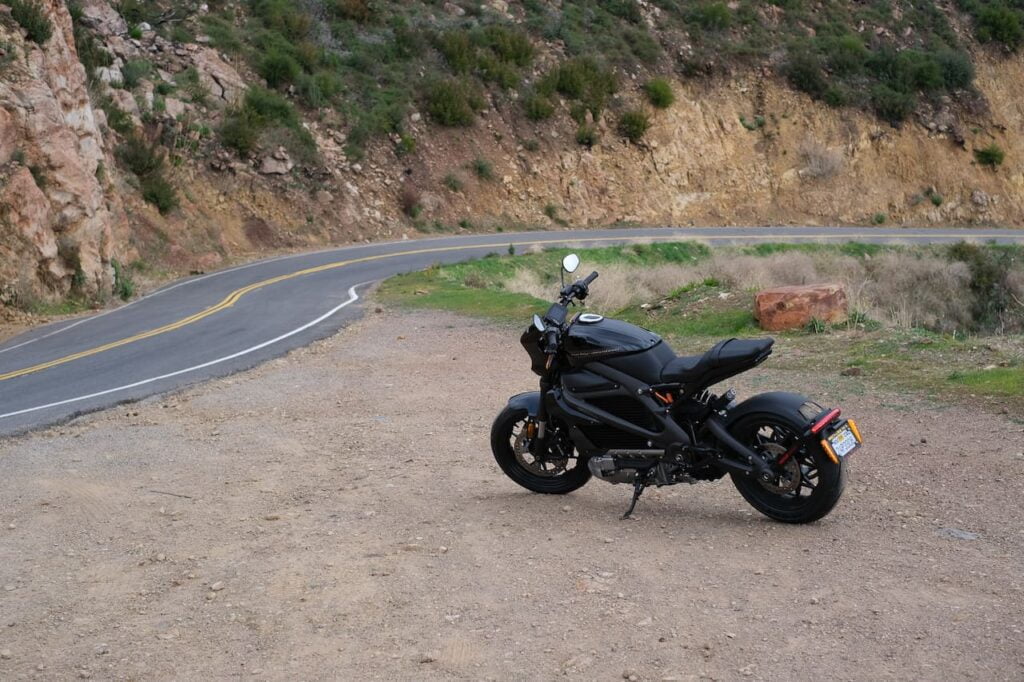
It’s eerie how the Harley-Davidson LiveWire makes almost no sound.
I’m no stranger to this, mostly from experience riding my bad-ass electric bike that does 40 km/h every day all the time — on low-power mode.
It’s different to driving an electric car, though. In a car you’re a bit isolated from the world. Driving an electric car is not too different from driving a quiet car. Your world is dominated by wind noise, tyre noise, and the sound from the entertainment system you’re using. Basically you’re in a cocoon.
When you ride an electric motorcycle, it’s not that you can’t hear your motorcycle — although you definitely can’t — it’s that every other vehicle seems rudely loud.
It’s like being for the first time in a loud South-East Asian market (if you’re not used to that in your day to day life) in Thailand, Vietnam, or Hong Kong. You feel like “I’m quiet, can’t everyone else be quiet? What’s with the racket?”
As much as I love the sound of a screaming engine, being on an electric motorcycle makes me look forward to a day when all vehicles are electric.
The Riding Position of the Harley-Davidson LiveWire
The first thing I noticed about the riding position of the LiveWire is the riding position. It’s so different to any cruiser motorcycle. In fact… it’s not a cruiser.
It can best be likened to a Ducati Monster. The bars are forward, more than a “standard”, but not light a sports motorcycle with clip-ons. And the pegs are in a standard position, right below.

This can be a little alarming for people not used to riding naked motorcycles. “Aren’t you just going to be in the wind all the time?” Well yes, but no.
There’s more to wind-flow than just assuming that because you’re above the handlebars you’re going to receive the full force of the wind. Little details like the headlight and surrounding plastics have a massive effect on how much wind actually hits you in the face.
Harley-Davidson’s aerodynamics engineers have done a great job here, to the point where when I was at 65 mph (over 100 km/h) on the Harley-Davidson LiveWire, I didn’t feel like I was subjected to terrible wind-blast.
Being over the handlebars also meant that I felt more in control of the LiveWire than a lazier reclined seat like on cruisers. On a sports bike, like the Yamaha R1 or a Ducati 998, you feel like you’re directly pushing the wheel from left to right. It’s crazy connected.
You don’t need THAT level of connection in daily riding. But having some direct input felt great.
Does the Harley-Davidson LiveWire have a soul?
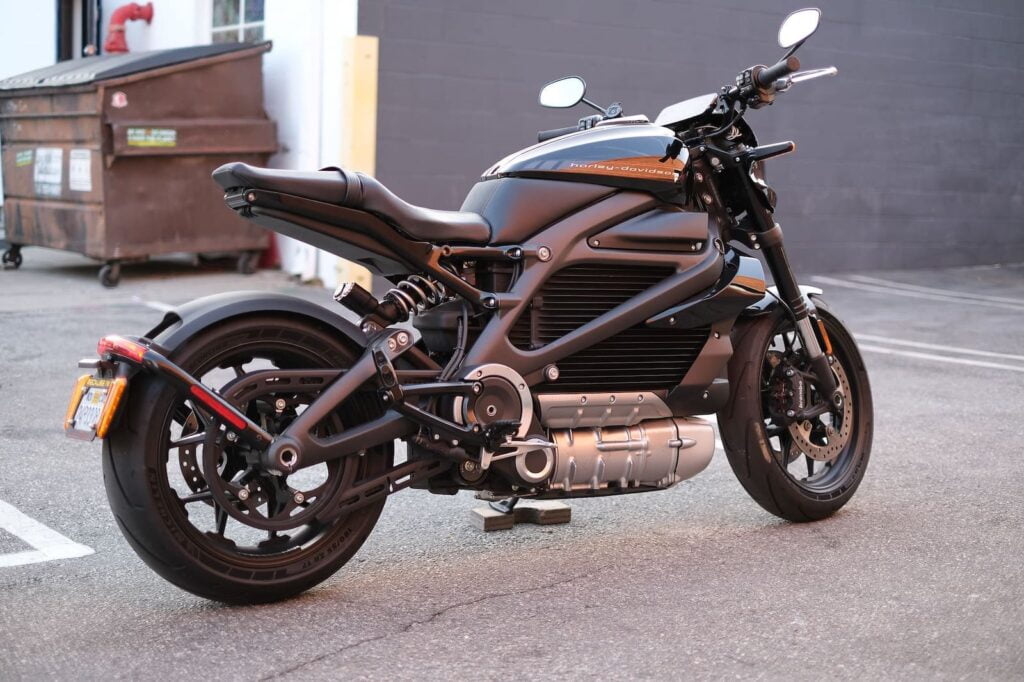
Man, this is a tough question. What is the “soul” of a motorcycle?
Soul can be many things to different people. The team at Common Tread had a whole meandering podcast about whether motorcycles have soul, and didn’t conclude anything, as usual (which is what I love about their podcast!).
In a nutshell, the Harley-Davidson LiveWire does indeed have a soul… but it’s your soul. It gets out of the way and lets you ride the way you want to. It accelerates effortlessly, brakes adequately, and is easy to handle at speeds ranging from near zero to over-illegal.
When people say a motorcycle has “soul”, they usually mean something like: “Motorcycles are loud. They vibrate. Especially Harley-Davidson motorcycles, the loudest, most vibrational motorcycles around.”
Switching from an internal combustion engine motorcycle to an electric one like the Harley-Davidson LiveWire’s is like switching from a film camera to a digital camera. Yes, some of the joy and nostalgia of working with plastics and chemicals vanishes. Instead, you focus more on the fundamentals of photography — subject, lighting, composition, and so on.
When you ride a LiveWire after riding other motorcycles, you find yourself having more time for things like thinking about cornering lines and braking distance. I arrive at the other end more relaxed and less exhausted, while having had just as much fun as usual.
The “soul” is of course quite different to that of any other Harley-Davidson, or any other motorcycle — particularly older “classics”. But there’s definitely character in there, even if it’s quieter than other machines.
Feeling Safe, and Like I’m the Obstacle
The fact that I could just point the Harley-Davidson LiveWire and go had an unusual effect: I felt the safest I’ve been on any motorcycle I’ve ridden (of the 20+, not including sub-model variants).
But at the same time, I knew that the only impediment to going faster was myself.
I have this same feeling on many modern motorcycles, by the way. For example, my BMW S1000R had rider aids almost guaranteed to not let me do anything stupid. And yet, I still rode somewhat cautiously. This is probably best on public roads, but the point is… the bike was a lot better than I was. The same is true of the Harley-Davidson LiveWire.
I never had to worry about the LiveWire’s engines, chassis, or brakes beyond its limits.
- When I was in traffic, I never worried about the engine overheating. Because it was basically stopped, and not using energy.
- When I was going fast, I never worried about the engine revving too hard or hitting a redline. I didn’t have that constant feeling of a series of controlled explosions under the seat of my pants that I have with petrol motorcycles (which is both awesome and a little unsettling when I don’t fully trust the machine).
- When braking downhill, off-camber, and in a turn, I never had to worry about the LiveWire standing up (due to it having cornering ABS).
- When I was somewhere quiet, like in a silent neighbourhood in the morning, in a country town, or when I was pulling up to a shared parking area where someone appeared to be silently enjoying a view, I never worried about disturbing the peace. Nearly every motorcycle I’ve owned disturbed the peace. I felt like a good citizen.
The Harley-Davidson LiveWire makes me feel like a better person, and makes me want to be a better motorcyclist. It gives me room to think more about entry angle, lean angle, head position, braking, and acceleration — much more than when I was riding an older, more troublesome motorcycle, like any Ducati I’ve ridden.
What’s it like to not shift on a motorcycle?
Do you ride a motorcycle to ride? Or do you ride to shift?
I’d love to answer that cheeky rhetorical question with “to ride”, but the truth is, I do enjoy shifting.
Shifting is… quirky. Every time you do it, you have to think a little about what speed you’re going, what you want to do, whether you should be off clutch in that particular place.
Shifting takes forethought, co-ordination, and skill. It’s part of the joy of motorcycling. So while I don’t think “I want to get out there and have a good session of shifting gears!” I do think that knowing how to shift is part of what makes me a good rider.
It’s a bit like baking bread. I can go out and buy bread. I can use yeast. But to make a sourdough from a starter you’ve been cultivating yourself… that brings a certain amount of joy with it.
On the other hand… a gearbox is one more thing to always adjust and eventually replace. Clutches wear out. False neutrals develop. Not having a gearbox is, from the perspective of maintenance, a blessing.
So — I don’t want to shift all the time. But I don’t ride to commute. If I were commuting every day, I might choose something like the Harley-Davidson LiveWire (or an Africa Twin DCT).
The One Eccentricity of Electric Motorcycles: Range Anxiety
You have probably heard of “range anxiety” in electric motorcycles. It’s the feeling that you might not make it to a charging station.
Part of this is the fact that charging stations aren’t anywhere near as easy to find as gas stations just yet. Another part is that it takes between 30-60 minutes to get a decent recharge into any electric motorcycle, and that’s often not time that we have.
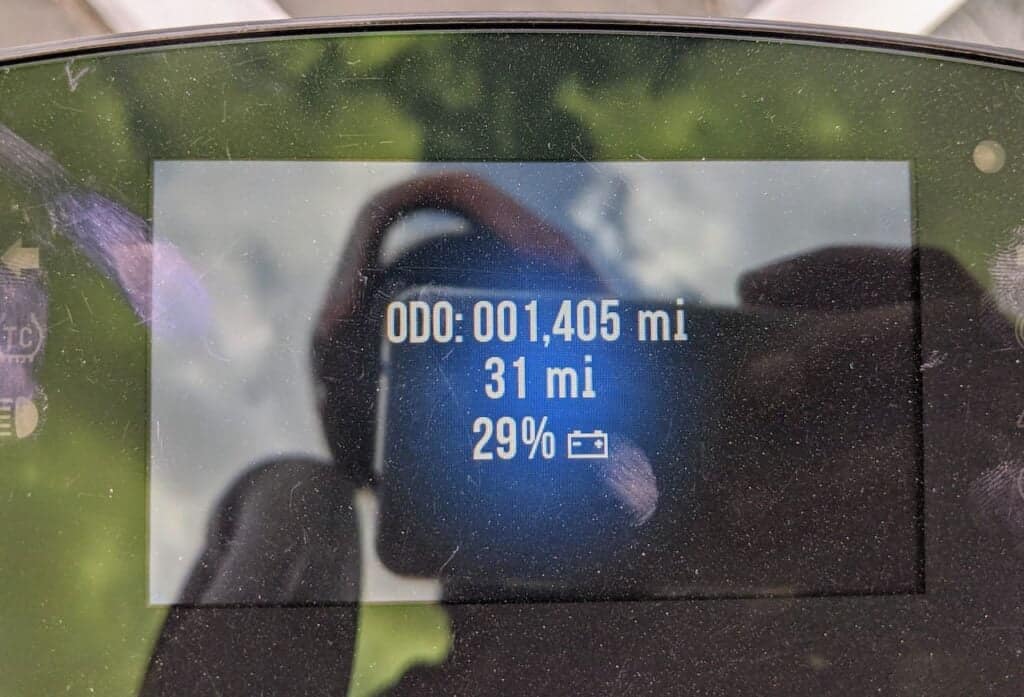
This means we have to plan our trips to include time to recharge.
Range anxiety on the Harley-Davidson LiveWire is complicated further because the indicated range fluctuates a lot when you’re on hilly roads.
At one point, when going downhill, my estimated range left was 140 miles (~200 kms).
Then I hit some uphill and it dropped to 50 miles (80 kms). Such a shocking jump!

Both range estimates were right in their moment, but the fact that it jumped so much was jarring.
You can view the range of an electric motorcycle as a hindrance — which it is — or you can embrace the complexity of range estimation as part of the personality of a motorcycle. Some motorcycles have soul because they go slow, or overheat, or blow up sometimes, or vibrate a lot. The Harley-Davidson LiveWire needs to eat light snacks frequently.
Concluding thoughts
In general… I love the Harley-Davidson LiveWire. But would I buy it now? Probably not.
The main reasons I won’t now buy a Harley-Davidson LiveWire are:
- The rate of improvement of electric vehicles is very high. Just looking at Zero’s development over the years, motorcycles got about 10% more powerful and 10% more range every year.
- I don’t like to buy new. You can only get Harley-Davidson LiveWire motorcycles new (for now), as few people are selling them. I have never bought a new motorcycle. They tend to lose 20% of their value just from walking out the dealership door, so that’s a non-starter for me.
- Prices drop on electric motorcycles faster than regular motorcycles. This is because of the compound effect of the improvement with new vehicles and general depreciation on used motorcycles. This is alleviated somewhat by the Harley-Davidson brand — but still, old Sportsters are much cheaper than new ones, even when low mileage.
Another reason is quite personal to me. I got into motorcycles not because of the riding, but because I was fascinated by the complexity of internal combustion engines. Knowing how they work and working on them is, to me, like being a watchmaker — a participant in an ageing industry that’s becoming an art form.
I didn’t choose motorcycling as a practical choice. I chose it because it’s fun. The insanity of a huge ICE underneath me is part of that fun.
We won’t have ICE engines forever. Even if we do, in 20-50 years they’ll be considered curiosities, like steam engines are today. It’s fun for me to be involved in that.
Electric motors are the future, but for now, their convenience and superiority are actually a turn-off for me.

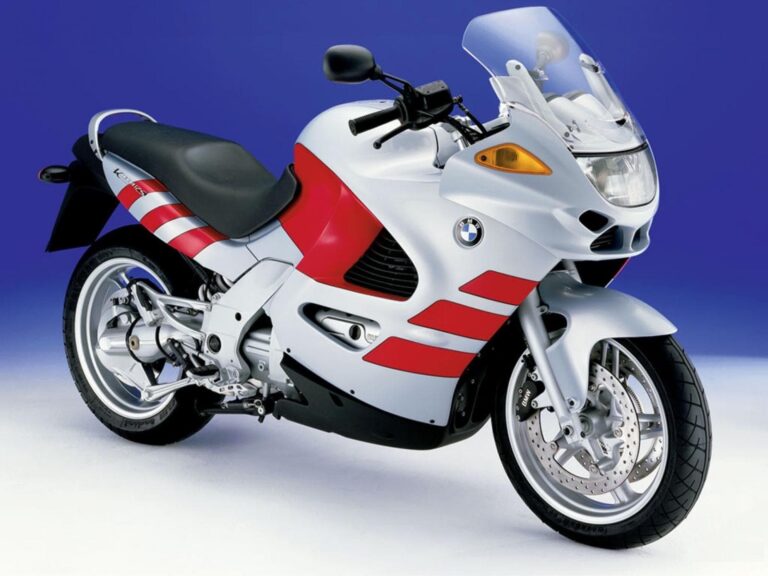
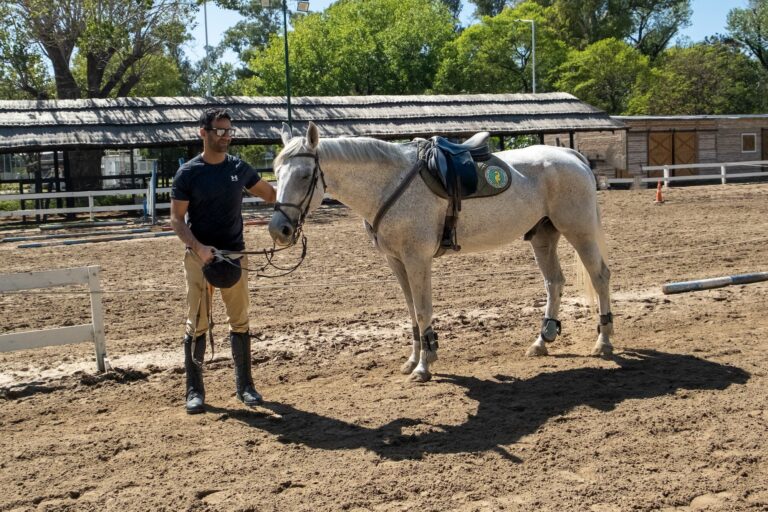
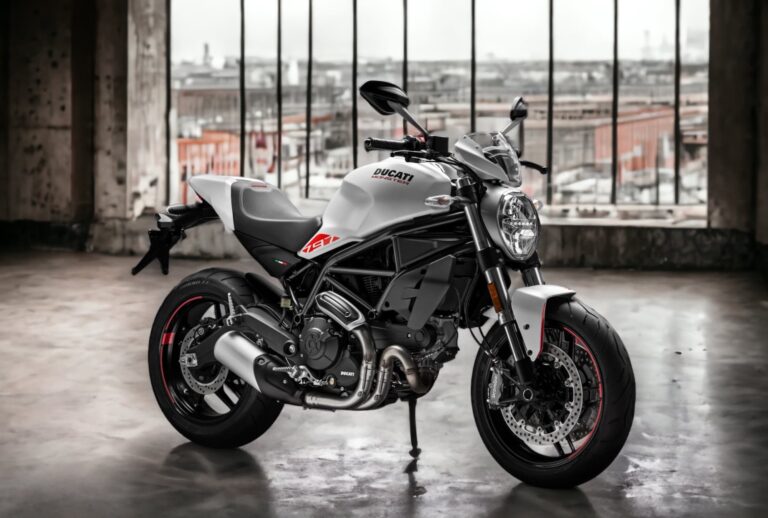
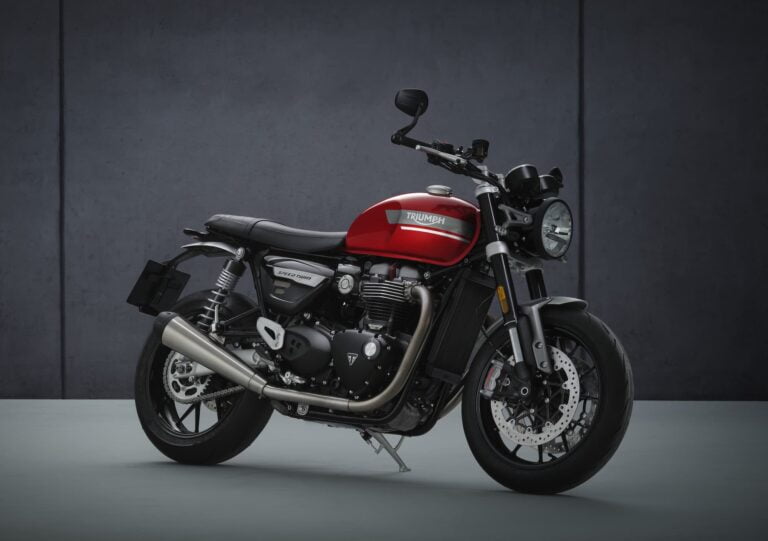
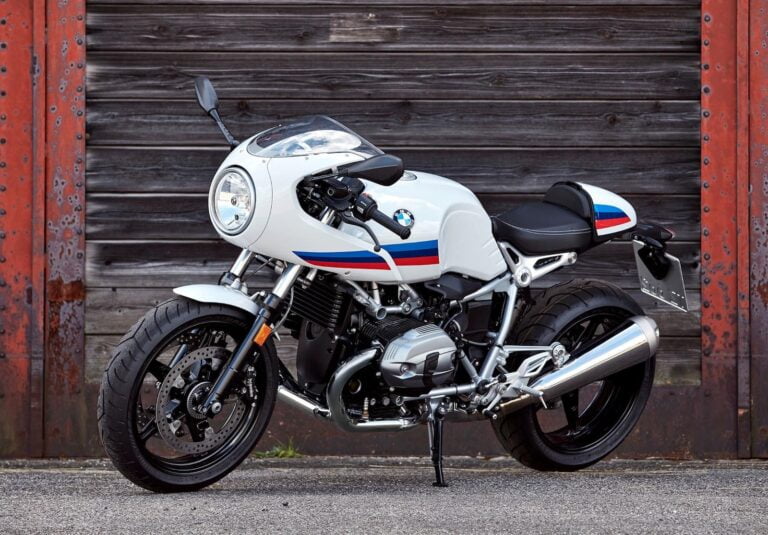
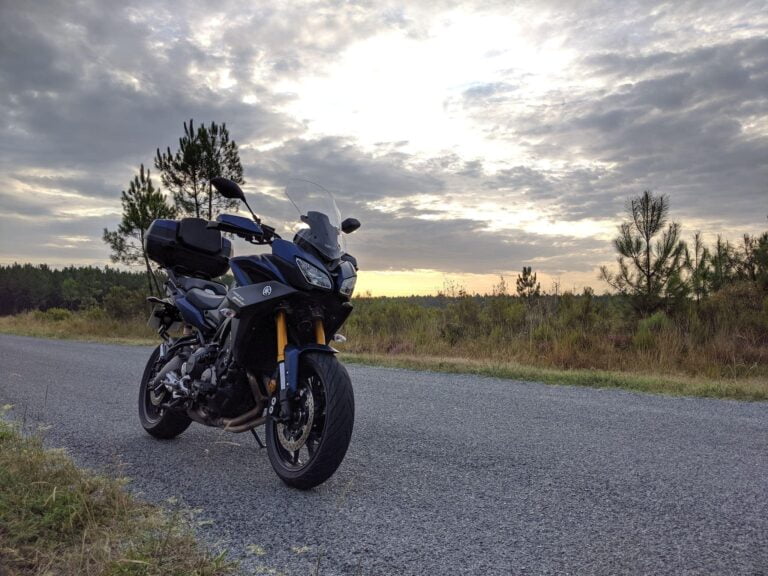
Thoughtful article that made for an interesting read, especially as I own a LiveWire. Agree with most of it except that concluding subjective opinion. The LiveWire’s unbeatable convenience and absolute superiority are an exhilarating and thrilling turn-on!!
Very informative article, except for one thing: virtually any product review lists the price of the product. I did not see that anywhere, perhaps to not scare off people?
I just recently purchased a $2K+ “mountain” bike. I use quotes because not sure if it is bona fide mountain, but it’s fat tire anyway. It’s fun, but very quirky the way the electric engages. I know, quite different from a motorcycle, but it got me curious about the electric motorcycle, which I had not kept up with (been years since I rode motorcycles). I’ll never be able to afford the Harley whatever its price (always wanted one since I was 5 years old). But it sure has got me thinking about the electric motorcycle in general.
About the issue of electric motors having torque from zero. Not only do they have torque from zero, they actually have maximum torque from zero. Not only that, most electric motors are capable of MANY times their rated torque at zero, for a short period of time. If this were not true, how do you think my 7.5 HP air compressor gets started?
After it is running even at full load, it draws the rated current of 42 amps. But in its initial start-up, it draws about 185 amps. That is LOTS of torque from zero. Ever watch a locomotive start up with a train? Even with a short train, if they don’t back up first to create slack, those traction motors will struggle a LONG time before it ever moves a foot. Yes, motors have torque at ZERO. If they didn’t, they would never move at all.
Now then, with that settled, what the author talked about, dumping full power into a dead-still motor all at once, is an entirely DIFFERENT issue. All the things he said would happen are no doubt true. If you could dump full power into the average electric car, no doubt you could smoke the tires for a block, notwithstanding the fact that once you break traction, it becomes VERY easy to keep the tires spinning. But these are two different issues that were trying to be juxtaposed as though they were one and the same; they are not. Almost any electric motor, by its very nature, has maximum torque AT ZERO. An ICE by nature, does not. In fact, it cannot even run at zero, over which the electric motor has a major advantage; no clutch of any kind is ever needed, though one might be used for freewheeling.
The price is: high! This bike is expensive, I assumed that was well known, though maybe not as widely as I thought.
Will there ever be a cruiser-style electric motorcycle where we can put saddlebags on it, or do we have to retrofit them? Otherwise, it’s a really cool motorcycle. I believe that internal combustion engines and battery-powered motorcycles will coexist.